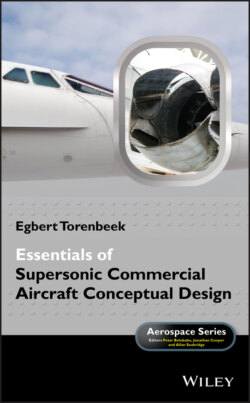Читать книгу Essentials of Supersonic Commercial Aircraft Conceptual Design - Egbert Torenbeek - Страница 10
1 History of Supersonic Transport Aircraft Development
ОглавлениеAt the end of the 1950s military jet aircraft made routine flights at speeds faster than sound, and the first generation of long‐range high‐subsonic jet‐powered airliners had only just been introduced into service, when it was realized that supersonic airliners could become a reality. The commercial potential for supersonic flight came under serious study in the four nations that fostered their development: France, UK, USA and USSR. Companies in the USA coupled experience obtained from the development of military vehicles during the 1950s (B‐58 Hustler, B‐70 Valkyrie) with successful jetliner programs in order to develop a supersonic transport (SST) designed to travel at up to three times the speed of sound in the stratosphere. Its funding required direct government sponsorship, with a series of competitions, selecting Boeing as the airframe manufacturer and General Electric as the engine manufacturer. Due to a variety of economic, environmental, and political issues, the development of the Boeing 2707 prototype was discontinued in 1971, nine years behind schedule and 20% above design weights. In 1962 an Anglo‐French consortium consisting of the British Aircraft Corporation (BAC) and Sud Aviation started the development of the Concorde. Almost concurrently the Soviets revealed that they were developing a supersonic transport in a manner conventional to their style, with the government assigning the project to Tupolev. Both aircraft (Figure 1.1) were designed to fly at approximately twice the speed of sound (Mach 2). The TU‐144 made its first flight in January 1969, was introduced into service in 1977 but suffered from excessive fuel consumption and severe operational difficulties. Since it was apparently unsafe and considered virtually useless, the first TU‐144 was withdrawn in June 1978 after 55 scheduled flights. Commercial transport at supersonic speeds was a reality from January 1976, when Concorde entered successful commercial service for 27 years with British Airways and Air France. It is therefore stunning that many “experts” have considered the Concorde a great technical achievement but an economic disaster.
Figure 1.1 The only supersonic commercial aircraft serving in commercial operations. Courtesy: Flight International.
